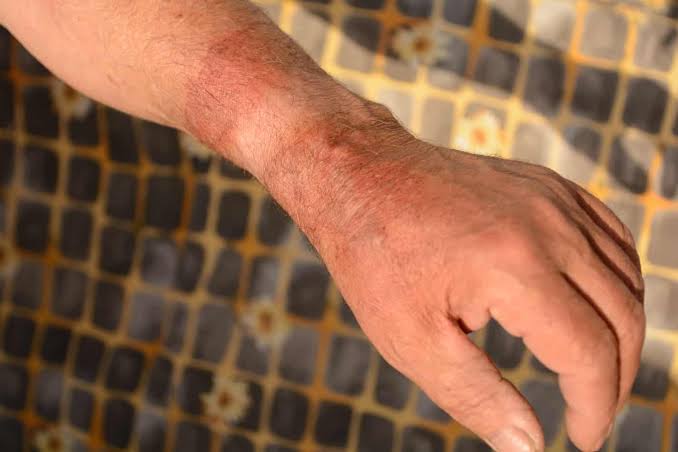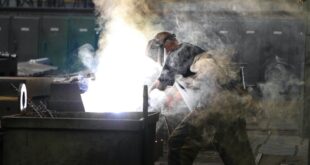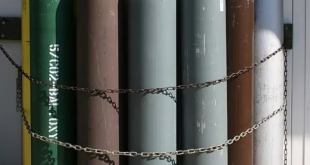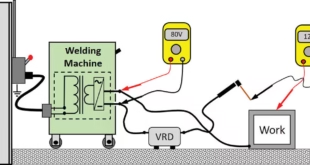How to Treat Welding Burns?
Welding is a process that joins metal parts together by heating them to a high temperature and fusing them. While welding is a useful and widely used technique, it can also be dangerous, and welding burns are a common injury associated with the process.
Welding burns occur when the skin comes into contact with hot metal, sparks, or ultraviolet radiation emitted during the welding process. Welding burns can range in severity from mild to severe, depending on the temperature of the metal, the duration of the exposure, and the type of protective clothing worn.
Proper treatment of welding burns is crucial to prevent further injury and reduce the risk of infection. Immediate action following a welding burn can prevent it from becoming worse and can help to speed up the healing process.
It is important to note that some welding burns may require medical attention and should be taken seriously. Failure to treat a welding burn can lead to scarring, infection, and other complications. Therefore, it is essential to know the symptoms of welding burns and how to treat them effectively.
Symptoms of Welding Burns
Welding burns can range in severity from mild to severe, depending on the duration and intensity of the exposure to the heat source. Identifying the type and severity of the burn is essential to determine the appropriate course of treatment.
Some common symptoms of welding burns include:
- Redness and pain in the affected area: This is the most common symptom of a welding burn. The affected area may appear red and swollen, and there may be a stinging or burning sensation.
- Blisters: More severe burns may result in the formation of blisters on the skin. These may be filled with fluid, and they may be painful or itchy.
- Peeling skin: In some cases, the skin may begin to peel away from the affected area as it heals.
- Nausea and dizziness: If the welding burn is severe, it can cause nausea, dizziness, and other symptoms of shock.
It is important to note that some welding burns may not be immediately apparent. For example, ultraviolet radiation emitted during the welding process can cause damage to the eyes, even if there is no apparent damage to the skin. Symptoms of eye damage from welding may include redness, blurred vision, and sensitivity to light.
Identifying the type and severity of the welding burn is crucial to determine the appropriate course of treatment. Mild burns may be treated at home with over-the-counter remedies, while more severe burns may require medical attention. Therefore, it is important to seek medical attention if the burn is large, deep, or shows signs of infection such as pus or oozing.
Initial Steps for Treating Welding Burns
Welding burns can be painful and potentially serious, so it is important to take immediate action to prevent further injury and infection. Here are some steps to take immediately following a welding burn:
- Remove the heat source: If the burn occurred due to contact with hot metal or sparks, move away from the heat source to prevent further exposure.
- Cool the affected area: Rinse the burn with cool water for several minutes to reduce pain and swelling. Do not use ice, as this can cause further damage to the skin.
- Protect the burn: To prevent infection and prevent further damage, cover the burn with a sterile, non-adhesive bandage or dressing. Do not use cotton balls or other materials that can stick to the wound.
- Take pain relievers: Over-the-counter pain relievers such as acetaminophen or ibuprofen can help to reduce pain and inflammation.
- Watch for signs of infection: Monitor the burn for signs of infection, such as increased redness, swelling, or oozing. Seek medical attention if you notice any of these symptoms.
In addition to these initial steps, taking measures to prevent further injury and infection is important. Here are some tips:
- Keep the burn clean and dry: Clean the burn with mild soap and water, and keep it dry to prevent infection.
- Avoid tight clothing or jewelry: Tight clothing or jewelry can irritate the burn and prevent proper healing.
- Avoid exposure to heat or sun: Protect the burn from further exposure to heat or sun, as this can delay the healing process.
- Seek medical attention if necessary: If the burn is large, deep, or shows signs of infection, seek medical attention immediately.
Taking quick action following a welding burn can help to prevent further injury and promote faster healing. By following these initial steps and taking measures to prevent infection, you can help to ensure a successful recovery.
Home Remedies for Welding Burns
While some welding burns may require medical attention, many can be treated effectively at home with first aid measures and home remedies. Here are some recommendations for managing pain, reducing inflammation, and promoting healing:
- Apply cool compresses: Use a cool compress or run cool water over the burn to reduce pain and inflammation.
- Use pain relievers: Over-the-counter pain relievers such as acetaminophen or ibuprofen can help to reduce pain and inflammation.
- Apply aloe vera: Aloe vera is a natural anti-inflammatory and can help to soothe the skin. Apply a thin layer of aloe vera gel to the burn several times a day.
- Use honey: Honey has antibacterial properties and can help to promote healing. Apply a thin layer of honey to the burn and cover it with a sterile bandage or dressing.
- Apply vinegar: Vinegar can help to reduce pain and inflammation. Mix equal parts of vinegar and water, and apply to the burn with a cotton ball.
- Avoid butter or oil: Do not apply butter or oil to the burn, as this can trap heat and make the burn worse.
It is important to note that these home remedies are not a substitute for medical treatment, and severe burns should be treated by a medical professional. However, for mild to moderate burns, these remedies can help to manage pain and promote healing.
Medical Treatment for Welding Burns
While many welding burns can be treated at home, some may require medical attention. Here are some situations in which you should seek medical attention:
- The burn is larger than a quarter inch in diameter or involves the face, hands, feet, or genitals.
- The burn is deep, appears white or charred, or involves underlying tissue.
- The burn is accompanied by symptoms such as fever, chills, or difficulty breathing.
- The burn is not healing or shows signs of infection such as increased redness, swelling, or oozing.
If any of these symptoms are present, seek medical attention immediately.
Types of medical treatments available for welding burns may include:
- Cleaning and debridement: The burn may need to be cleaned and dead tissue removed to promote healing.
- Antibiotics: If the burn is infected or at risk of infection, antibiotics may be prescribed.
- Pain medication: Prescription pain medication may be prescribed to manage pain.
- Dressings: Various types of dressings may be used to promote healing, such as silver-containing dressings, hydrogels, or non-adhesive dressings.
- Skin grafting: In severe cases, a skin graft may be necessary to promote healing and prevent scarring.
Prevention of Welding Burns
While welding burns can be treated, the best course of action is to prevent them from occurring in the first place. Here are some steps that can be taken to prevent welding burns:
- Use proper protective equipment: Wear appropriate personal protective equipment such as welding gloves, safety glasses, and welding helmets with the proper shade for the welding process being used.
- Know the hazards: Be aware of the hazards associated with weldings, such as hot metal, sparks, and radiation, and take necessary precautions to avoid them.
- Keep your work area clean: Keep your work area clean and free of clutter to avoid tripping hazards or accidental contact with hot objects.
- Use proper ventilation: Ensure proper ventilation in the work area to avoid exposure to harmful fumes and gases.
- Use safe welding practices: Follow safe welding practices such as ensuring proper grounding, not welding near flammable materials, and avoiding welding in confined spaces.
- Train employees: Train employees in safe welding practices and ensure they are properly equipped with the necessary protective equipment.
FAQs
How do you treat a welder’s burn?
The treatment for a welder’s burn depends on the severity of the burn. For minor burns, home remedies such as cold compresses, aloe vera, or honey can help to soothe the affected area. For more severe burns, medical attention may be necessary, and treatment options may include cleaning and debridement, antibiotics, pain medication, dressings, or skin grafting.
How long does welding burn last?
The duration of a welding burn depends on the severity of the burn. Minor burns may heal within a few days, while more severe burns may take several weeks to heal.
What is the first aid of burns in welding?
The first aid for welding burns involves cooling the affected area with cool running water for at least 20 minutes, or until the pain subsides. Cover the burn with a sterile bandage or clean cloth, and seek medical attention if necessary.
Can welding burns be harmful?
Yes, welding burns can be harmful and can lead to long-term complications such as scarring or nerve damage. In severe cases, the burn can become infected, which can lead to more serious health problems.
Why do potatoes help flash burn?
Potatoes contain starch, which can help to soothe the affected area and reduce pain and inflammation caused by a flash burn.
Will sunblock stop welding burn?
Sunblock is not designed to protect against welding burns. Welders should wear appropriate personal protective equipment such as welding gloves, safety glasses, and welding helmets to protect against burns and other hazards associated with welding.
What are the first 3 steps for treating burns?
The first three steps for treating burns are to cool the affected area with cool running water, cover the burn with a sterile bandage or clean cloth, and seek medical attention if necessary.
What are 3 first aid for burns?
Three first aid measures for burns include cooling the affected area with cool running water, covering the burn with a sterile bandage or clean cloth, and seeking medical attention if necessary.
What type of burn is welding?
Welding burns are typically thermal burns caused by exposure to heat, radiation, or flames during the welding process.
What is the most severe burn in welding?
Third-degree burns are the most severe type of burn that can occur in welding. These burns penetrate through the skin and may cause nerve damage or scarring.
How can I protect my skin from welding?
To protect your skin from welding, wear appropriate personal protective equipment such as welding gloves, safety glasses, and welding helmets. Additionally, avoid wearing synthetic fabrics, which can melt and cause burns.
Conclusion
In conclusion, welding burns can be a painful and potentially serious injury. It is important to treat them properly to prevent complications and promote healing. Early identification of symptoms, quick action, and proper home remedies can help to manage pain and reduce inflammation. In more severe cases, medical treatment may be necessary.
Prevention is the best course of action, and steps can be taken to reduce the risk of welding burns in the first place. Using proper protective equipment, practicing safe welding techniques, and training employees can help to prevent these types of injuries.
 Welding of Welders All about Welding and Welders
Welding of Welders All about Welding and Welders




